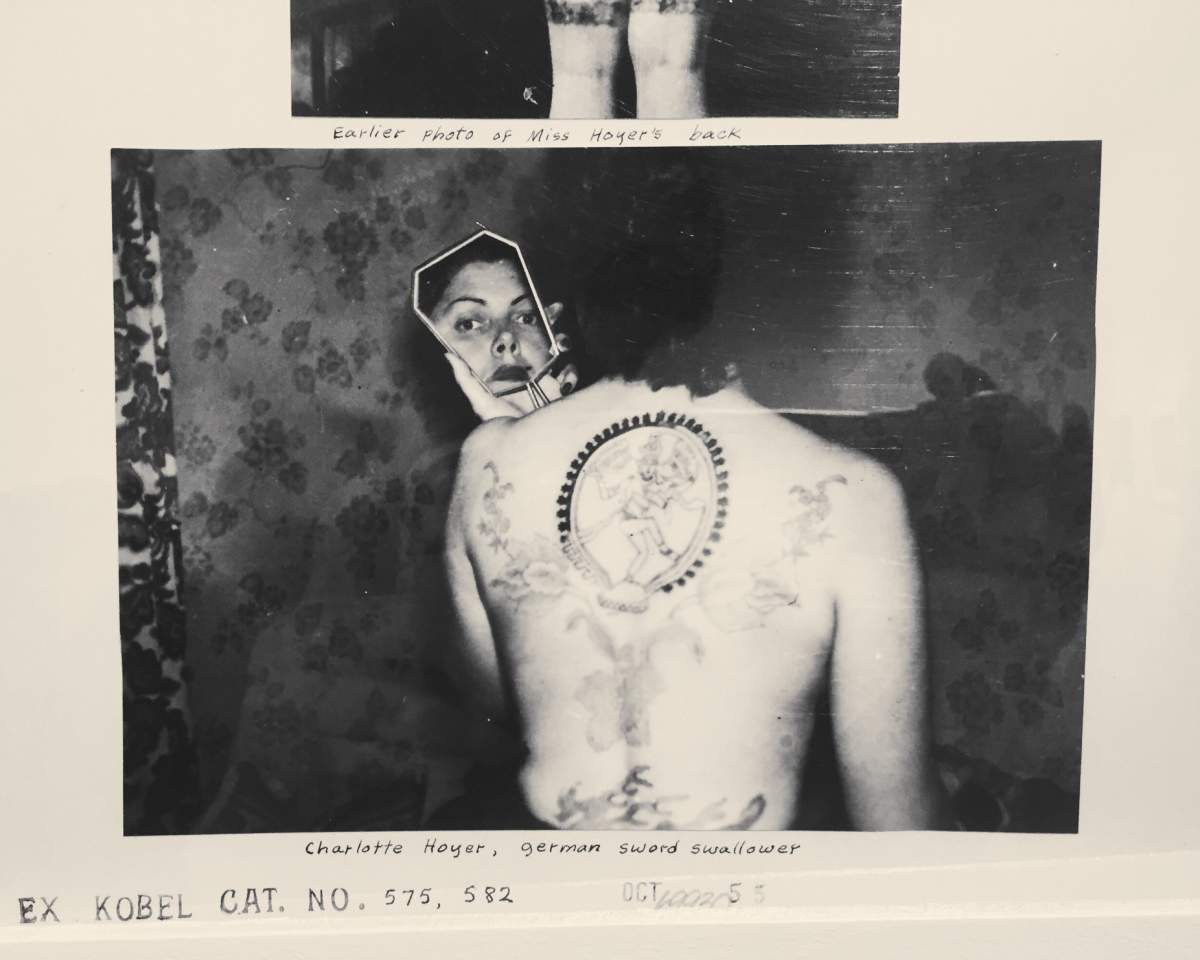
Tattoos can mark a place in someone's life the birth of a child, a move or a spiritual awakening. Sometimes, they can mark a literal place. Bloomington, Indiana native Isabelle, 23, has a tattoo on her forearm of the coordinates of her childhood home, where she lived with her grandmother and younger sister. "The coordinates are something that will never change. They're something so simple, yet so meaningful," Isabelle says.
Tattoos can carry meaning and memories, while also being a fine art. On view at Indiana University's Grunwald Gallery of Art, "Indiana Tattoo: History and Legacy" showcases this art form and explores the history and culture of tattoos in Indiana. Tattoos may be popular today, but less than 20 years ago, Hoosiers couldn't get tattoos so easily, because giving a tattoo was illegal.
"People were fearful of the spread of disease, they were also maybe afraid of the monumental task of keeping track of all of the tattooers and their sanitary practices. A lot of these tattooers were traveling at the time, and it was hard to follow them," says Jeremy Sweet, Grunwald Associate Director and co-curatorwith tattoo artist Colin McClainof the exhibition.
That didn't mean it was impossible to get a tattoo, though. One figure in the illegal tattoo scene was Roy Boy Cooper, who operated his shop "The Badlands" in Gary, Indiana in the 1980s and 90s. A collection of Cooper's belongings are on view at the Grunwald in the companion show "Welcome Back to the Badlands."
The images and artifacts speak to the transgressiveness of tattoo culture during that era, explains Eric Smolinski, a tattoo artist who owns the Roy Boy collection.
"It was a rebellion," Smolinski says. "He was able to sneak past things. He was able to have four tigers inside of a tattoo shop in the 80s and 90s."
In 1997, the Indiana State Department of Health created rules to regulate the sanitation of Indiana tattoo parlors. The rules were incorporated into law in 1998, according to the Indiana State Department of Health's Epidemiology Resource Center.
Legalization and decreased stigma led to the mainstreaming of tattoos. This popularity of tattoos means growth for the industry, but some tattoo artists lament what's been lost.
"I feel like it loses a little bit of its magic when a soccer mom will come in and boss me around because she wants to get an infinity symbol on her ankle, and she wants me to move it 15 times because she's not even serious about it," Smolinski says.
"For the people who have been doing this for a long time, they are very personal, they are works of art, they're not trite, they're not trendy they're there for life," says Allison Vandenberg, a professor at Indiana University in the gender studies department.
It can be difficult for people who once experienced discrimination for their tattoos to see this art form become respectable and mainstream, asserts Vandenberg.
Still, it's important to recognize that people get tattoos for a myriad of reasons, she says. In fact, this exhibition challenges preconceived notions about who gets tattooed and why, Vandenberg adds.
"There are communities and families where this is part of a tradition. This isn't just a form of self-expression that's used by that stereotype of the loner, the outsider," Vandenberg says. "That's not really the story that's being told through this exhibit."
The exhibition shows that as the art form evolves, tattoos continue to delight, excite, and heal.
For Bloomington resident Isabelle, the coordinates tattooed on her arm will continue to remind her of her roots, especially now that she plans to move to Denver, Colorado. Those numbers will always be reminder of the love and joy that her grandmother created in their home, Isabelle says, and will bring comfort until she can visit home again. "I don't know if you've gone on a trip, but when you come back, there's that certain smell you relate with home," Isabelle says. "Smelling that is always a good feeling."






